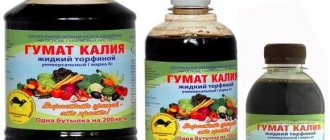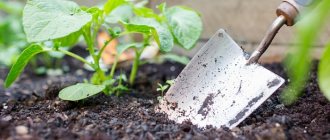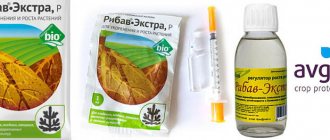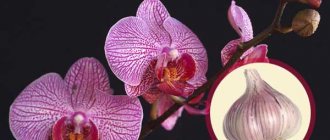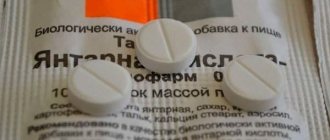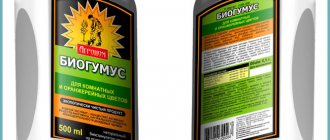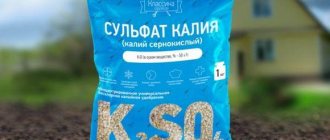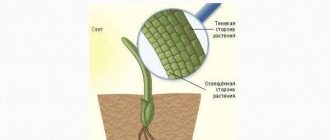When constantly growing crops in the same place, the soil is depleted, so it is impossible to do without applying fertilizers. At the same time, it is best to use organic matter to improve soil health. We will tell you what vermicompost is and how to use it.
Vermicompost is a biologically active, environmentally friendly and natural organic fertilizer. It is formed when red Californian worms process organic matter in the soil. Digesting organic residues, worms secrete coprolites into the soil, which are the form of organic matter most suitable for absorption by plants.
Content
- Vermicompost: general definitions
- Vermicompost: purpose and methods of application
- Composition of vermicompost (vermicompost)
- Vermicompost: how it is obtained and release format
- How to use vermicompost
- a) Use of dry vermicompost
- b) Application of liquid vermicompost
- c) Application of vermicompost for individual plants
- About the safety of vermicompost
- Interesting fact: THE LARGEST BUYER OF VERBIHUMUS
- As a conclusion
Vermicompost increases the germination of seeds, activates the growth and development of plants, stimulates fruiting, saturates the soil with organic matter with a large set of microelements in a form accessible to plants, etc.
In this material we will summarize all the information related to the purpose and use of vermicompost. Let's consider not only its beneficial properties, but also its composition, features and standards of use, release format, etc.
Reviews
Based on reviews from those who have tried this product, the advantages of the fertilizer can be highlighted:
- Actively fertilizes the soil.
- Suitable for all types of plants.
- Safe product: no harmful flora.
- Can be used for several years in a row on the site without reducing the positive effect. Complexly affects different cultures.
- Increases productivity.
- Has a higher percentage of nitrogen than humus.
- It does not have a sharp, unpleasant odor, unlike manure.
- Stimulates the formation of buds and abundant flowering of indoor plants.
- Activates the growth of the root system.
There are other advantages of eco-fertilizer:
- Suitable for treating seeds and seedlings.
- The natural product belongs to the class of substances with low fire hazard and is non-toxic.
- Positively affects the fertility of the substrate. Can be combined with other types of fertilizers.
- Does not clog the soil, unlike manure.
- Good friability.
- Biofertilizer absorbs moisture well.
- Even when a natural product is frozen and then defrosted, the unique organic fertilizer does not lose its beneficial properties.
- Stimulates the formation and reproduction of soil microorganisms, during the active life of which humus is formed.
No negative aspects have been identified when using vermicompost. Excessive application of organic fertilizer provokes an increase in soil pH levels, which disrupts the microflora of the substrate.
Possible negative nuances are associated only with incorrect use of the concentrated product (exceeding the norm by 1 sq. m or a flowerpot), but such cases are the exception.
There are practically no negative reviews about vermicompost; natural organic fertilizer is recommended by many vegetable growers, flower growers and gardeners.
Vermicompost: general definitions
Vermicompost (vermicompost, from the Latin “vermi” - worms) is an environmentally friendly organic fertilizer, a product of processing organic matter (on an industrial scale, most often cattle manure) by a population of earthworms specially bred for this purpose. Of the total processing volume, the yield of commercial vermicompost is about 60%.
Vermicompost does not contain pathogenic microflora, helminth eggs, weed seeds and heavy metals. Despite the fact that it is an organic product, vermicompost does not have an unpleasant odor, its odor is neutral.
Vermicompost contains a unique community of microorganisms beneficial to soil and plants, which, when added to the soil, populate it, secrete phytohormones, antibiotics, fungicidal and bactericidal compounds, which leads to the displacement of pathogenic microflora. All this ultimately heals the soil and eliminates many widespread plant diseases.
The importance of vermicompost in organic farming can hardly be overestimated.
Crop susceptibility
Vermicompost is considered the main fertilizer for gardening work. Moreover, the susceptibility of crops to it depends on the type of plant.
Highly responsive plants (60-70%):
- all root vegetables;
- plants of the Solanaceae family;
- pumpkin crops;
- cereals;
- fruit trees.
Plants of medium and low level of susceptibility (20-30%):
- legumes;
- Maslenitsa
Vermicompost: purpose and methods of application
Vermicompost is intended to enhance the supply of nutrients to plants, enhance the activity of soil microflora, activate the synthesis of proteins, carbohydrates and vitamins in plants, increase the resistance of plants to temperatures, reduce the intake of radionuclides, heavy metals and pesticides into plants, enhance the growth and development of plants, accelerate ripening , increasing the yield and improving its quality.
Methods of using vermicompost:
- Vermicompost is a stimulant for soaking seeds for better germination.
- Vermicompost is an excellent component of nutritious soil for seedlings of vegetable and flower crops, as well as indoor flowers for their growth and development.
- Biohumus is an additive to the holes when planting seedlings in the ground, and when planting/transplanting seedlings of fruit and berry plants for their rapid adaptation.
- Vermicompost is feeding plants and improving soil health (open or protected), saturating it with organic matter and beneficial components.
Vermicompost is ideal for large plants and crops that require neutral acidity. But there are a number of nuances that you should know. For example, not all plants are responsive to the addition of vermicompost - sunflower, mustard, rapeseed, peas, soybeans, etc.
Positive properties of the drug
It can accelerate the ripening of the crop by almost 10-14 days. At the same time, the taste of the fruit does not suffer at all. In the process of using vermicompost, plants absorb nutrients better. Consequently, the amount of various vitamins, vegetable sugar and protein increases in the fruits. At the same time, there is no questionable effect on the plant that occurs when using chemicals.
Controls the process of nitrate accumulation, which can begin due to an excess of nitrogen in the soil. It also blocks unwanted compounds and substances. It starts to work very quickly. It can be used at any time of the year. And also apply to any type of soil. But after flowering ends, when the fruits begin to set, it is better to refrain from fertilizing for a while.
Composition of vermicompost (vermicompost)
Vermicompost is a concentrated fertilizer containing a balanced complex of essential nutrients and microelements, enzymes, soil antibiotics, vitamins, plant growth and development hormones. It contains a large amount of humic substances.
Humic acids, fulvic acids and humins - this gives this organic fertilizer high agrochemical and growth-stimulating properties. The more humic components, the more nutritious the soil.
Composition of dry biohumus (vermicompost):
- moisture – 40-45%;
- ash – 35-45%;
- organic substances – 35-65%;
- humic substances – 20-32%;
- total nitrogen – 1.0-2.0%;
- total phosphorus (P2O5) – 0.9-3.0%;
- total potassium (K2O) – 0.9-2.0%;
- as well as beneficial natural microflora, phytohormones and vitamins, etc.
All nutrients are present in it in a balanced combination and in the form of compounds bioavailable to the plant. By the way, it should be noted that caprolites (the waste products of worms) glue the soil together into small lumps with the help of mucus, and this, among other things, allows the prolonged release of nutrients to the plant.
The fertilizer is easily and gradually absorbed by plants throughout their development cycle.
Vermicompost: how it is obtained and release format
Vermicompost is a natural organic fertilizer produced by processing organic waste from crop and livestock farming by earthworm populations. Currently, special types of “domestic” earthworms have been bred from “wild” earthworms, which work on special farms producing vermicompost for its artificial cultivation (production). Currently, one of the most common is the specially bred Californian worm Lumbricus rubellus (another name is the Little Red Crawl).
Vermicompost production
Vermicompost is produced in TWO formats:
a) DRY or FERMENTED - this is the main product of production, free-flowing, friable, fatty, black-brown in color.
b) LIQUID – this is an extract from dry vermicompost, available in the form of a liquid, gel or paste, also black-brown in color.
In terms of usefulness, these two formats have no fundamental difference. In terms of its effect on the soil structure, there is one difference: dry vermicompost increases the looseness of the soil (making it air- and moisture-permeable), while liquid vermicompost does not have any effect on the soil structure.
On store shelves you can see vermicompost divided by purpose - universal vermicompost, or vermicompost for specific plants (for example, vermicompost for tomatoes, vermicompost for flowers, etc.). This applies more to liquid vermicompost. But this division is very arbitrary; it is more of a marketing ploy to confuse the buyer and increase sales.
But the manufacturer matters. It is important that this is a PROVEN MANUFACTURER that produces QUALITY products. For example, IP Tkachenko, his products are one of the best in Russia.
Vermicompost IP Tkachenko - product line
Safety precautions
Liquid vermicompost is not a toxic substance, so you will not need safety glasses and masks when using it. If there are scratches or irritations on your hands, you can wear rubber gloves, and after the feeding process is completed, you must wash your hands. The fertilizer is sold in unbreakable plastic bottles.
If, by some chance, fertilizer gets into your eye, rinse with plenty of water; if you swallow a certain amount of the solution, then rinse your stomach with a weak solution of potassium permanganate or activated carbon. There have been no cases of poisoning with vermicompost and a reaction is possible only in case of individual intolerance.
How to use vermicompost
a) Use of dry vermicompost
The rate of use of dry vermicompost is summarized in the following table:
| Type of work | Application rate |
| Preparation of soil for seedlings of vegetable, green and other crops | 10-25% of the total soil volume |
| Planting vegetable seedlings, planting root crops | 100-200 gr. per hole |
| Planting seedlings of fruit and berry crops | about 2kg per seedling |
| Fertilizing of flower, vegetable and other green crops during the growing season | 500 gr. dry vermicompost per 1m2 |
| Feeding berry bushes | about 1.5 kg of dry vermicompost per plant |
| Preparing soil for indoor flowers | 10-20% of dry vermicompost from the volume of the pots |
| Rehabilitation of greenhouse soil | about 20% of the total soil volume |
Dry vermicompost is not left on the surface; it must be embedded in the soil, evenly mixed with the main soil.
When preparing SOIL SUBSTRATE using BIOHUMUS (for planting, replanting or changing the top layer of soil), use the following ratio: 1 part vermicompost + 3 parts component (turf soil, peat, sand, etc.). Those. the share of vermicompost in the total volume of soil is about 25%.
Vermicompost (dry/fermented/granulated, etc.) from various manufacturers
b) Application of liquid vermicompost
Liquid vermicompost is very effective for soaking seeds. The liquid format of vermicompost is used throughout the growing season for regular feeding of vegetable, fruit and berry, green, flower and other crops. This is a concentrated solution (1 liter of vermicompost concentrate is enough to prepare 200 liters of working solution).
You can make your own liquid vermicompost from dry one. To do this, one glass of dry vermicompost is diluted in 5 liters of water at room temperature, stirred well and left for one day at room temperature. After this it is ready for use.
| Type of work | Application rate |
| Soaking seeds before sowing | 15-20 ml./1 l. water, soak before sowing for 12-72 hours |
| Treatment of tubers, bulbs and cuttings before planting | 15-20 ml./1 l. water, soak tubers and bulbs for 6-12 hours, cuttings for 14-24 hours |
| Treatment of seedlings before planting | 5ml. / 1 l. water, dip the roots of the seedling for 3-5 minutes before planting |
| Root feeding | 10-15 ml/10 l. water, applied through irrigation, it is advisable to alternate with foliar feeding, consumption rate is 4-10 liters. working solution per 1m2 |
| Foliar feeding | 25-30 ml/10 l. water, spray in the morning and evening hours during the growing season |
| Feeding seedlings | 3-5 ml./5 l. water, watering once a week |
Vermicompost - concentrate (liquid) from various manufacturers
c) Application of vermicompost for individual plants
The rate of use of vermicompost for individual plants is in the following table
| Culture | Norm for using vermicompost |
| All crops for digging the soil in autumn or spring | Apply 2.5 cups (500 ml) per m2 to the surface layer of soil and mix to a depth of 10 cm |
| Vegetables, potatoes, tomatoes, cucumbers, etc. | When planting: 1/2 cup (100 ml) per hole Feeding: once a month 100 ml per bush or 1 cup (200 ml) per 1 m2 |
| Onion garlic | In preparation for sowing: 1 cup (200 ml) per m2 Top dressing: 1 cup (200 ml) per 1 m2 |
| Strawberry wild-strawberry | When planting: 1/2 cup (100 ml) per hole Feeding: once a month 100 ml per bush or 1 cup (200 ml) per 1 m2 |
| Garden flowers | When planting: 1/2 cup (100 ml) per hole. Feeding: once a month 100 ml per bush or 1 glass (200 ml) per m2 |
| Indoor flowers | When planting: mix 1 part vermicompost + 3 parts soil. Feeding: once every two months, 2-3 tablespoons per plant. |
| Fruit and berry ornamental shrubs | When planting: depending on the size of the plant, 2-4 cups (400-800 ml) per planting hole. Feeding: 1-2 times per season, 1-2 cups (200-400 ml) per bush. |
| Liquid fertilizing for all types of crops (gives a quick effect) | Top dressing (root and foliar): 1 cup (200 ml) per 10 l/water. Leave for at least a day. |
What is important: the use of both dry and liquid vermicompost DOES NOT CAUSE OVERDOSE that disrupts the soil microflora or burns plants. It is advisable to follow the standards specified in the instructions for use. However, if you deviate from the norm, an excess of vermicompost will only benefit the plant.
Feeding our green friends
Watering should be done 2-3 times a month. Just a couple of spoons of vermicompost is enough for the plant to literally change before your eyes.
If flowers grow in large pots, then you need to mix 200 grams of fertilizer with 1 kg of soil.
In fact, in order to enrich home plants with useful substances, it is recommended to use not dry fertilizer, but its aqueous solution. Gardeners sometimes call humus vermicompost tea.
How to cook it? I'll tell you now. One cup of fertilizer should be poured into a large five-liter bucket and diluted with cold water. Everything needs to be mixed thoroughly and allowed to stand overnight. The composition of the miracle tea includes:
Such an aqueous solution will undoubtedly have a positive effect on the growth of the plant, as well as on its speed and duration of flowering. I will say one thing, beloved green pets will delight their owners with the richness of the leaves, the bright colors of the petals and the magnificent aromas exuded from the buds of the plants.
In addition to all of the above, an aqueous solution obtained from vermicompost will help increase the quantity and quality of seeds, which, you see, is also important.
Interesting fact: THE LARGEST BUYER OF VERBIHUMUS
Such a buyer turned out to be Saudi Arabia, which announced the preparation of contracts for the purchase of vermicompost in the amount of about 5 billion bags of vermicompost per year!!! ...that's tens of millions of tons per year over the next ten years. It was officially announced on March 27, 2021 that as part of the large-scale “green” initiative of the Crown Prince of Saudi Arabia, Muhammad bin Salman Al Saud, to combat global climate change, Saudi Arabia plans to plant 10 billion trees in the coming decades. The goals are to green the desert, reduce carbon emissions, and overcome pollution and degradation of land resources. At the same time, the Crown Prince intends to launch a “green Middle East” program, which involves planting 40 billion trees throughout the region.
Thus, if the plan is to plant 50 billion trees in the next decade, that's 5 billion trees every year. Each tree is one bag of vermicompost (about 15-30 kg). In terms of commercial vermicompost, this will amount to about 75 million tons per year. All this will seriously increase the demand for vermicompost by hundreds of millions of tons in the coming years.
There is no doubt that these initiatives will be implemented. There is nothing to replace vermicompost in the desert. They refuse chemistry. International conventions and national legislations of countries prohibit the export of topsoil. A mature date palm seedling can cost $1,000, so spending $25 on vermicompost and providing it with starter nutrition is at least sustainable. The price of high-quality vermicompost for a bag weighing 15 kg (25 liters) can reach 25 US dollars. Russia had experience in selling vermicompost; we sold it wholesale in Jordan for $1.6 per 1 kg. Potential exports of vermicompost to the Middle East could reach $125 billion per year. Russia, it is advisable not to miss this chance...
Buy BIOHUMUS (liquid, dry) at a GREAT PRICE on Yandex.Market
